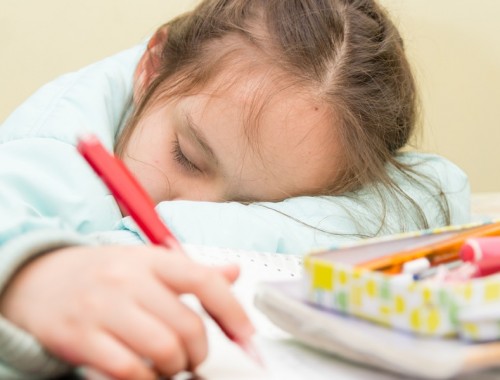Make sure an eye exam is on your child’s back-to-school checklist. If vision problems remain untreated, kids who are packed with potential may lag behind in learning and become withdrawn, warns the B.C. Association of Optometrists. That’s why it’s important to include an eye exam on your back-to-school checklist, says B.C. Optometrist Dr. Antoinette Dumalo.
“For school-aged children, several different vision skills must work together for them to see and understand clearly,” says Dr. Dumalo. “If any of these eye abilities are out of sync, their learning development can be greatly affected.”
Research indicates as many as one in five children has a vision disorder. Many children accept poor vision and other eye problems as normal because they don’t know any better. Vision screenings that are provided in school can detect some eye problems, but serious vision and eye health conditions don’t always come with obvious signs. A thorough eye examination is the only way to know if a child’s eye health is good and their vision is developing normally.
Common vision disorders in children
Some of the most common vision conditions affecting children are nearsightedness, farsightedness, astigmatism, crossed eyes and lazy eye. The good news is that if detected early, most of these conditions can be corrected by an optometrist.
-
- Nearsightedness (myopia) – Individuals see nearer objects more clearly than distant ones because the eyeball is longer than normal.
-
- Farsightedness (hyperopia) – The farsighted eye is underpowered, so to see clearly the individual must work extra hard to focus. Children who are very farsighted are often missed by screening tests because they can focus clearly for short periods of time, but their learning may be severely hampered by the effort it takes to focus their eyes.
-
- Astigmatism – An irregular curvature of the front surface of the eye that can result in blurred or distorted vision at all distances. This can be particularly challenging for children when reading letters and numbers.
-
- Colour-blindness – Hereditary conditions in which people either have no colour vision at all or have difficulty distinguishing between two colours, such as red and green, or blue and yellow. Seeing certain colours is difficult for one or two of every 20 boys and one of every 200 girls.
-
- Binocular deficiencies – The inability of the eyes to work together effectively as a team. This includes poor eye alignment, focusing, movement and fixation (i.e. depth perception). This is another problem often missed by screening tests, and is responsible for many reading difficulties. Fortunately, your optometrist can prescribe simple eye exercises, which are often extremely helpful in treating these problems.
-
- Crossed eyes (strabismus) – A vision condition in which the eye muscles fail to align the eyes, causing one or both eyes to turn in, out, up or down. Children with strabismus may initially have double vision, but the brain may eventually disregard one of the images, which can lead to lack of development of the eye that is not being used. Any child over six months of age who has a turned eye should be evaluated by an optometrist.
-
- Lazy eye (amblyopia) – Weak vision or vision loss in one eye, which causes lack of development of that eye. If not treated early (preferably before age six), it may be very difficult to regain vision in the lazy eye. This condition is often completely without symptoms and is one of the main reasons why all children should have a thorough eye exam by age three.
Corrective Lenses and Glasses for Kids
To treat many of these common eye conditions, optometrists often prescribe corrective eyeglasses, sunglasses, or contact lenses, enabling young children to rapidly catch up to their preschool pals. For certain conditions, vision therapy – exercises for the eyes – may be an effective treatment. For example, with lazy eye, optometrists often patch the “good” eye as an exercise to force the brain to process images from, and strengthen the vision in, the weaker eye.
Symptoms of vision problems in children may include headaches, burning and itchy eyes, difficulty remembering, poor eye-hand co-ordination, clumsiness, squinting, holding objects or reading material closer than normal, omitting or confusing small words, and covering or closing one eye. However, optometrists are quick to remind parents not to assume that their child has good vision or eye health because of a lack of symptoms. If they are only seeing out of one eye, or if they have an eye health problem, they may still appear to be functioning normally. And because children don’t know any different, they usually will not mention it to their parents.
Learning Issues
“Another common misconception among parents is that children outgrow vision problems,” says Dr. Dumalo. “This is simply not true. Early detection and treatment are critical. If conditions such as crossed eyes and lazy eye are not treated early, vision impairment can become permanent. And it’s important to remember that any vision problem can affect a child’s learning abilities and interfere with personality, behaviour and overall development.”
Optometrists specialize in examining, diagnosing, treating, managing and preventing diseases and disorders of the visual system, the eye and related structures. It’s important children have a complete eye exam by six months, at three years, before entering school and regularly thereafter. Adults 19 to 64 should have an eye exam every two years. People with diabetes or age 65 or older should have an exam at least once a year.




[…] Vision and learning problems in children […]